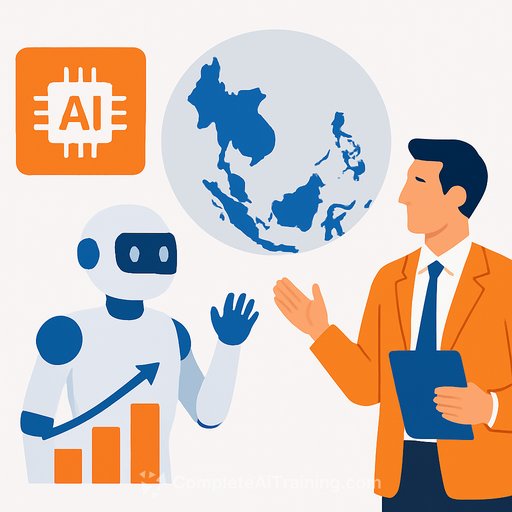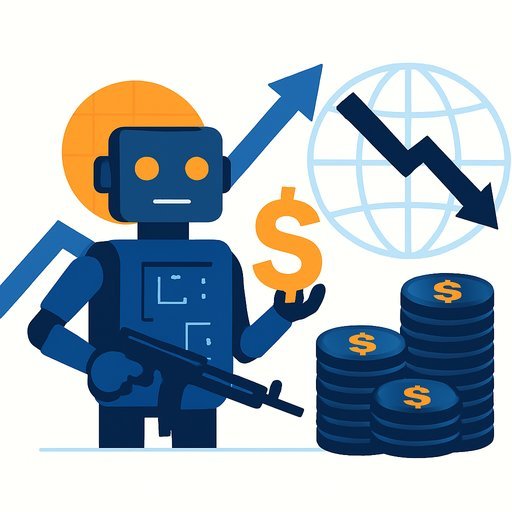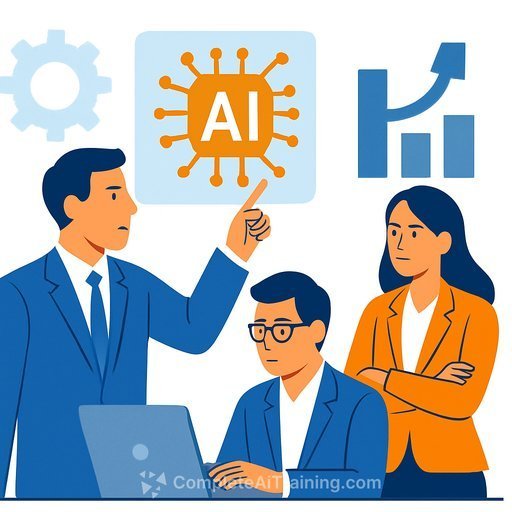AI for CEOs: Treat it as an operating model shift, not a tool rollout
Bain & Company's new guide for Southeast Asia lays out a simple truth: most companies are stuck in pilots because they treat AI like software. If you want results, redesign how the business works and decide where AI changes revenue, cost-to-serve, and speed.
The priority isn't "more models." It's clarity on where AI can reset your economics, then funding those bets to production with measurable outcomes.
Why Southeast Asia needs a different playbook
- Markets vary sharply by culture, income, and size. What works in one country won't scale cleanly to another.
- Wages are roughly 7% of US levels, limiting savings from labor substitution. Efficiency-only cases rarely move the needle.
- Only about 40% of market value sits in large firms (vs. 60% in India), so fewer players can bankroll long, exploratory pilots.
The takeaway: aim for speed, scale, and new ways of working. Use AI to make decisions faster, reshape pricing and demand, or add capacity without adding headcount.
What "good" looks like right now
- Compress time-to-market by automating research, design iterations, and launch workflows.
- Stabilize supply with predictive signals and inventory decisioning, opening room for new revenue.
- Factories: cut downtime with predictive maintenance and dynamic scheduling to lift throughput.
- Financial services: use LLMs to assist compliance reviews and documentation, improving accuracy and pace.
As Bain senior partner Aadarsh Baijal notes, the impact comes when leaders stop "rolling out software" and start redesigning how the business competes. Map how AI shifts demand, pricing, operations, and customer needs-then concentrate resources there.
The operating model: data, culture, and teams
AI scale isn't a hiring contest. The skills you need often exist inside the business. The real work is rewiring how teams collaborate and how people use AI in their day-to-day roles.
- The Lab: small technical and process experts who redesign workflows and build the first versions.
- The Crowd: the wider workforce that needs enough AI fluency to use and improve those tools in real work.
Senior partner Mohan Jayaraman's point is practical: impact is strongest when existing teams lead the build, paired with broad training, so new systems become normal operations-not one-off trials.
Foundations matter: data quality, lineage, governance, access controls, and integrations with current systems. Without this groundwork, early wins stall before scale.
From pilots to production: Bain's AI Innovation Hub in Singapore
Bain is launching an AI Innovation Hub in Singapore with support from the Singapore Economic Development Board (EDB). The focus: help enterprises move past experiments and run AI at scale across advanced manufacturing, energy and resources, financial services, healthcare, and consumer goods.
Singapore's ecosystem-over a thousand startups and a projected S$198.3 billion in AI-driven economic value by 2030-gives the Hub a strong base. Expect production-ready systems like predictive maintenance in factories, AI support for regulatory work in finance, and retail personalization, plus help building in-house teams and engineering discipline.
Bain & Company AI insights | Singapore EDB
A one-page CEO plan
- Start with value pools: Where can AI change revenue, unit economics, or cycle time in the next 6-12 months?
- Set 3-5 concrete outcomes: e.g., reduce claims cycle time by 30%, lift OEE by 8%, cut days of inventory by 15%.
- Design the operating model: define what changes in process, policy, and roles when AI is in the loop.
- Stand up the Lab and the Crowd: expert squads plus broad enablement so tools become daily habits.
- Pick your tech base: a small stack you can operate-data platform, orchestration, model hosting, guardrails.
- Fix data now: quality standards, lineage, governance, and secure connections to source systems.
- Ship to production fast: 90-day releases with real users, then iterate based on live metrics.
- Fund scale-ups, not perpetual pilots: tie budgets to outcomes and adoption, not demos.
- Put in guardrails: risk, compliance, and monitoring embedded from day one.
Metrics that actually matter
- Time from idea to production release
- % of targeted workflows with AI assist in daily use
- Throughput or capacity gain without added headcount
- Unit cost reduction (cost-to-serve, cost per interaction)
- % of revenue influenced by AI-enabled products or pricing
- Model quality and stability (drift, accuracy, uptime)
- Regulatory findings and audit pass rates
Risks and guardrails
- Data privacy and access: least-privilege by default, auditable trails.
- Bias and fairness: test sets, monitored metrics, and documented exceptions.
- Model drift: automated monitoring, rollback paths, and retrain schedules.
- Vendor lock-in: portable architecture, open standards, and exit plans.
Build literacy at scale
If your Lab can build but the Crowd can't use, progress stalls. Give teams practical, role-based training so AI becomes part of daily work, not a side project.
See AI courses by job role to upskill product, operations, finance, and compliance with the right depth for daily execution.
Bottom line: In Southeast Asia, the winners won't be the firms with the most pilots. They'll be the firms that rebuild how they operate-fast-so AI changes outcomes the P&L can feel.
Your membership also unlocks:






